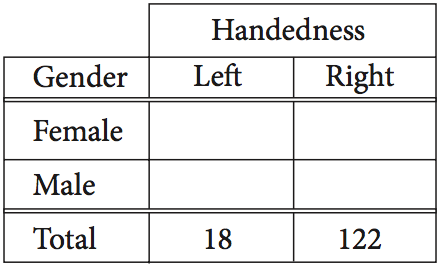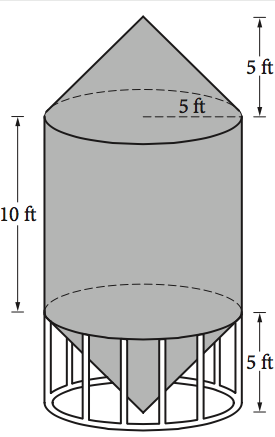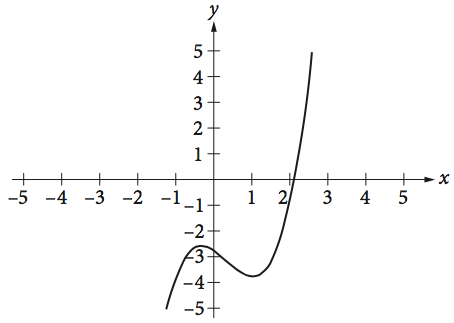SAT | Hardest SAT Math Questions Ever
Want to test yourself against the most difficult SAT math questions? Want to know what makes these questions so difficult and how best to solve them? If you’re ready to really sink your teeth into the SAT math section and have your sights set on that perfect score, then this is the guide for you.
We’ve put together what we believe to be the 13 most difficult questions for the new 2016 SAT, with strategies and answer explanations for each. These are all hard SAT Math questions from College Board SAT practice tests, which means understanding them is one of the best ways to study for those of you aiming for perfection.
Brief Overview of SAT Math
The third and fourth sections of the SAT will always be math sections. The first math subsection (labeled “3”) does not allow you to use a calculator, while the second math subsection (labeled as “4”) does allow the use of a calculator. Don’t worry too much about the no-calculator section, though: if you’re not allowed to use a calculator on a question, it means you don’t need a calculator to answer it.
Each math subsection is arranged in order of ascending difficulty (where the longer it takes to solve a problem and the fewer people who answer it correctly, the more difficult it is). On each subsection, question 1 will be “easy” and question 15 will be considered “difficult.” However, the ascending difficulty resets from easy to hard on the grid-ins.
Hence, multiple choice questions are arranged in increasing difficulty (questions 1 and 2 will be the easiest, questions 14 and 15 will be the hardest), but the difficulty level resets for the grid-in section (meaning questions 16 and 17 will again be “easy” and questions 19 and 20 will be very difficult).
With very few exceptions, then, the most difficult SAT math problems will be clustered at the end of the multiple choice segments or the second half of the grid-in questions. In addition to their placement on the test, though, these questions also share a few other commonalities. In a minute, we’ll look at example questions and how to solve them, then analyze them to figure out what these types of questions have in common.
But First: Should You Be Focusing on the Hardest Math Questions Right Now?
If you’re just getting started in your study prep (or if you’ve simply skipped this first, crucial step), definitely stop and take a full practice test to gauge your current scoring level. Check out our guide to all the free SAT practice tests available online and then sit down to take a test all at once.
The absolute best way to assess your current level is to simply take the SAT practice test as if it were real, keeping strict timing and working straight through with only the allowed breaks (we know—probably not your favorite way to spend a Saturday). Once you’ve got a good idea of your current level and percentile ranking, you can set milestones and goals for your ultimate SAT Math score.
If you’re currently scoring in the 200-400 or the 400-600 range on SAT Math, your best bet is first to check out our guide to improving your math score to be consistently at or over a 600 before you start in trying to tackle the most difficult math problems on the test.
If, however, you’re already scoring above a 600 on the Math section and want to test your mettle for the real SAT, then definitely proceed to the rest of this guide. If you’re aiming for perfect (or close to), then you’ll need to know what the most difficult SAT math questions look like and how to solve them. And luckily, that’s exactly what we’ll do.
WARNING: Since there are a limited number of official SAT practice tests, you may want to wait to read this article until you’ve attempted all or most of the first four official practice tests (since the questions below were taken from those tests). If you’re worried about spoiling those tests, stop reading this guide now; come back and read it when you’ve completed them.
The 13 Hardest SAT Math Questions
Now that you’re sure you should be attempting these questions, let’s dive right in! We’ve curated 13 of the most difficult SAT Math questions for you to try below, along with walkthroughs of how to get the answer (if you’re stumped).
No Calculator SAT Math Questions
Question 1
| 5 |
| 9 |
(F−32)The equation above shows how temperature F, measured in degrees Fahrenheit, relates to a temperature C, measured in degrees Celsius. Based on the equation, which of the following must be true?
- A temperature increase of 1 degree Fahrenheit is equivalent to a temperature increase of
5 9 degree Celsius.
- A temperature increase of 1 degree Celsius is equivalent to a temperature increase of 1.8 degrees Fahrenheit.
- A temperature increase of
5 9 degree Fahrenheit is equivalent to a temperature increase of 1 degree Celsius.
A) I only
B) II only
C) III only
D) I and II only
y=mx+b
where in this case
C=
| 5 |
| 9 |
(F−32)or
C=
| 5 |
| 9 |
F−
| 5 |
| 9 |
(32)You can see the slope of the graph is
| 5 |
| 9 |
, which means that for an increase of 1 degree Fahrenheit, the increase is
| 5 |
| 9 |
of 1 degree Celsius.C=
| 5 |
| 9 |
(F)C=
| 5 |
| 9 |
(1)=
| 5 |
| 9 |
Therefore, statement I is true. This is the equivalent to saying that an increase of 1 degree Celsius is equal to an increase of
| 9 |
| 5 |
degrees Fahrenheit.C=
| 5 |
| 9 |
(F)1=
| 5 |
| 9 |
(F)(F)=
| 9 |
| 5 |
Since
| 9 |
| 5 |
= 1.8, statement II is true.The only answer that has both statement I and statement II as true is D, but if you have time and want to be absolutely thorough, you can also check to see if statement III (an increase of
| 5 |
| 9 |
degree Fahrenheit is equal to a temperature increase of 1 degree Celsius) is true:C=
| 5 |
| 9 |
(F)C=
| 5 |
| 9 |
(
| 5 |
| 9 |
)C=
| 25 |
| 81 |
(whichis≠1)An increase of
| 5 |
| 9 |
degree Fahrenheit leads to an increase of
| 25 |
| 81 |
, not 1 degree, Celsius, and so Statement III is not true.The final answer is D.
Question 2
| 24x2+25x−47 |
| ax−2 |
=−8x−3−
| 53 |
| ax−2 |
is true for all values of x≠
| 2 |
| a |
, where a is a constant.What is the value of a?
A) -16
B) -3
C) 3
D) 16
24x2+25x−47=(−8x−3)(ax−2)−53
You should then multiply (−8x−3) and (ax−2) using FOIL.
24x2+25x−47=−8ax2−3ax+16x+6−53
Then, reduce on the right side of the equation
24x2+25x−47=−8ax2−3ax+16x−47
Since the coefficients of the x2-term have to be equal on both sides of the equation, −8a=24, or a=−3.
The other option which is longer and more tedious is to attempt to plug in all of the answer choices for a and see which answer choice makes both sides of the equation equal. Again, this is the longer option, and I do not recommend it for the actual SAT as it will waste too much time.
The final answer is B.
Question 3
| 8x |
| 2y |
?A) 212
B) 44
C) 82
D) The value cannot be determined from the information given.
| 8x |
| 2y |
so that the numerator and denominator are expressed with the same base. Since 2 and 8 are both powers of 2, substituting 23 for 8 in the numerator of
| 8x |
| 2y |
gives
| (23)x |
| 2y |
which can be rewritten
| 23x |
| 2y |
Since the numerator and denominator of have a common base, this expression can be rewritten as 2(3x−y). In the question, it states that 3x−y=12, so one can substitute 12 for the exponent, 3x−y, which means that
| 8x |
| 2y |
=212The final answer is A.
Question 4
| 8−i |
| 3−2i |
If the expression above is rewritten in the form a+bi, where a and b are real numbers, what is the value of a? (Note: i=√−1)
| 8−i |
| 3−2i |
in the standard form a+bi, you need to multiply the numerator and denominator of
| 8−i |
| 3−2i |
by the conjugate, 3+2i. This equals(
| 8−i |
| 3−2i |
)(
| 3+2i |
| 3+2i |
)=
| 24+16i−3+(−i)(2i) |
| (32)+(2i)2 |
Since i2=−1, this last fraction can be reduced simplified to
| 24+16i−3i+2 |
| 9−(−4) |
=
| 26+13i |
| 13 |
which simplifies further to 2+i. Therefore, when
| 8−i |
| 3−2i |
is rewritten in the standard form a + bi, the value of a is 2.The final answer is A.
Question 5
| 1 |
| 3 |
the length of the corresponding side of triangle ABC. What is the value of sinF?
AB=√202−162=√400−256=√144=12
Since triangle DEF is similar to triangle ABC, with vertex F corresponding to vertex C, the measure of angle∠F equals the measure of angle∠C. Therefore, sinF=sinC. From the side lengths of triangle ABC,
sinF=
| oppositeside |
| hypotenuse |
=
| AB |
| AC |
=
| 12 |
| 20 |
=
| 3 |
| 5 |
Therefore, sinF=
| 3 |
| 5 |
.The final answer is
| 3 |
| 5 |
or 0.6.
Calculator-Allowed SAT Math Questions
Question 6

The incomplete table above summarizes the number of left-handed students and right-handed students by gender for the eighth grade students at Keisel Middle School. There are 5 times as many right-handed female students as there are left-handed female students, and there are 9 times as many right-handed male students as there are left-handed male students. if there is a total of 18 left-handed students and 122 right-handed students in the school, which of the following is closest to the probability that a right-handed student selected at random is female? (Note: Assume that none of the eighth-grade students are both right-handed and left-handed.)
A) 0.410
B) 0.357
C) 0.333
D) 0.250
x+y=18
5x+9y=122
When you solve this system of equations, you get x=10 and y=8. Thus, 5*10, or 50, of the 122 right-handed students are female. Therefore, the probability that a right-handed student selected at random is female is
| 50 |
| 122 |
, which to the nearest thousandth is 0.410.The final answer is A.
Questions 7 & 8
Use the following information for both question 7 and question 8.
The owner of the Good Deals Store estimates that during business hours, an average of 3 shoppers per minute enter the store and that each of them stays an average of 15 minutes. The store owner uses Little’s law to estimate that there are 45 shoppers in the store at any time.
Question 7
Since 84 shoppers per hour make a purchase, 84 shoppers per hour enter the checkout line. However, this needs to be converted to the number of shoppers per minute (in order to be used with T=5). Since there are 60 minutes in one hour, the rate is
| 84shoppersperhour |
| 60minutes |
=1.4shoppers per minute. Using the given formula with r=1.4 and T=5 yieldsN=rt=(1.4)(5)=7
Therefore, the average number of shoppers, N, in the checkout line at any time during business hours is 7.
The final answer is 7.
Question 8
| 45−18 |
| 45 |
x100=60percent less than the average number of shoppers in the original store at any time.
The final answer is 60.
Question 9
 A grain silo is built from two right circular cones and a right circular cylinder with internal measurements represented by the figure above. Of the following, which is closest to the volume of the grain silo, in cubic feet?
A grain silo is built from two right circular cones and a right circular cylinder with internal measurements represented by the figure above. Of the following, which is closest to the volume of the grain silo, in cubic feet?A) 261.8
B) 785.4
C) 916.3
D) 1047.2
Volume of a Cone
V=
| 1 |
| 3 |
πr2hVolume of a Cylinder
V=πr2h
can be used to determine the total volume of the silo. Since the two cones have identical dimensions, the total volume, in cubic feet, of the silo is given by
Vsilo=π(52)(10)+(2)(
| 1 |
| 3 |
)π(52)(5)=(
| 4 |
| 3 |
)(250)πwhich is approximately equal to 1,047.2 cubic feet.
The final answer is D.
Question 10
A) m+6
B) m+7
C) 2m+14
D) 3m+21
| m+9 |
| 2 |
, y=
| 2m+15 |
| 2 |
, z=
| 3m+18 |
| 2 |
are true. The average of x, y, and z is given by
| x+y+z |
| 3 |
. Substituting the expressions in m for each variable (x, y, z) gives
[
+
+
] |
||||||
| 3 |
This fraction can be simplified to m+7.
The final answer is B.
Question 11

The function f(x)=x3−x2−x−
| 11 |
| 4 |
is graphed in the xy-plane above. If k is a constant such that the equation f(x)=k has three real solutions, which of the following could be the value of k?
y=f(x)=x3−x2−x−
| 11 |
| 4 |
and
y=k
A real solution of a system of two equations corresponds to a point of intersection of the graphs of the two equations in the xy-plane.
The graph of y=k is a horizontal line that contains the point (0,k) and intersects the graph of the cubic equation three times (since it has three real solutions). Given the graph, the only horizontal line that would intersect the cubic equation three times is the line with the equation y=−3, or f(x)=−3. Therefore, k is −3.
The final answer is D.
Question 12
| 1 |
| 2 |
nv2The dynamic pressure q generated by a fluid moving with velocity v can be found using the formula above, where n is the constant density of the fluid. An aeronautical engineer users the formula to find the dynamic pressure of a fluid moving with velocity v and the same fluid moving with velocity 1.5v. What is the ratio of the dynamic pressure of the faster fluid to the dynamic pressure of the slower fluid?
v2=1.5v1
Given the equation q=
| 1 |
| 2 |
nv2, substituting the dynamic pressure and velocity of the faster fluid gives q2=
| 1 |
| 2 |
n(v2)2. Since v2=1.5v1, the expression 1.5v1 can be substituted for v2 in this equation, giving q2=
| 1 |
| 2 |
n(1.5v1)2. By squaring 1.5, you can rewrite the previous equation asq2=(2.25)(
| 1 |
| 2 |
)n(v1)2=(2.25)q1Therefore, the ratio of the dynamic pressure of the faster fluid is
| q2 |
| q1 |
=
| 2.25q1 |
| q1 |
=2.25The final answer is 2.25 or 9/4.
Question 13
A) x−5 is a factor of p(x).
B) x−2 is a factor of p(x).
C) x+2 is a factor of p(x).
D) The remainder when p(x) is divided by x−3 is −2.
| p(x) |
| x+k |
=q(x)+
| r |
| x+k |
where q(x) is a polynomial and r is the remainder. Since x+k is a degree-1 polynomial (meaning it only includes x1 and no higher exponents), the remainder is a real number.
Therefore, p(x) can be rewritten as p(x)=(x+k)q(x)+r, where r is a real number.
The question states that p(3)=−2, so it must be true that
−2=p(3)=(3+k)q(3)+r
Now we can plug in all the possible answers. If the answer is A, B, or C, r will be 0, while if the answer is D, r will be −2.
A. −2=p(3)=(3+(−5))q(3)+0
−2=(3−5)q(3)
−2=(−2)q(3)
This could be true, but only if q(3)=1
B. −2=p(3)=(3+(−2))q(3)+0
−2=(3−2)q(3)
−2=(−1)q(3)
This could be true, but only if $q(3)=2)
C. −2=p(3)=(3+2)q(3)+0
−2=(5)q(3)
This could be true, but only if q(3)=
| −2 |
| 5 |
D. −2=p(3)=(3+(−3))q(3)+(−2)
−2=(3−3)q(3)+(−2)
−2=(0)q(3)+(−2)
This will always be true no matter what q(3) is.
Of the answer choices, the only one that must be true about p(x) is D, that the remainder when p(x) is divided by x−3 is -2.
The final answer is D.